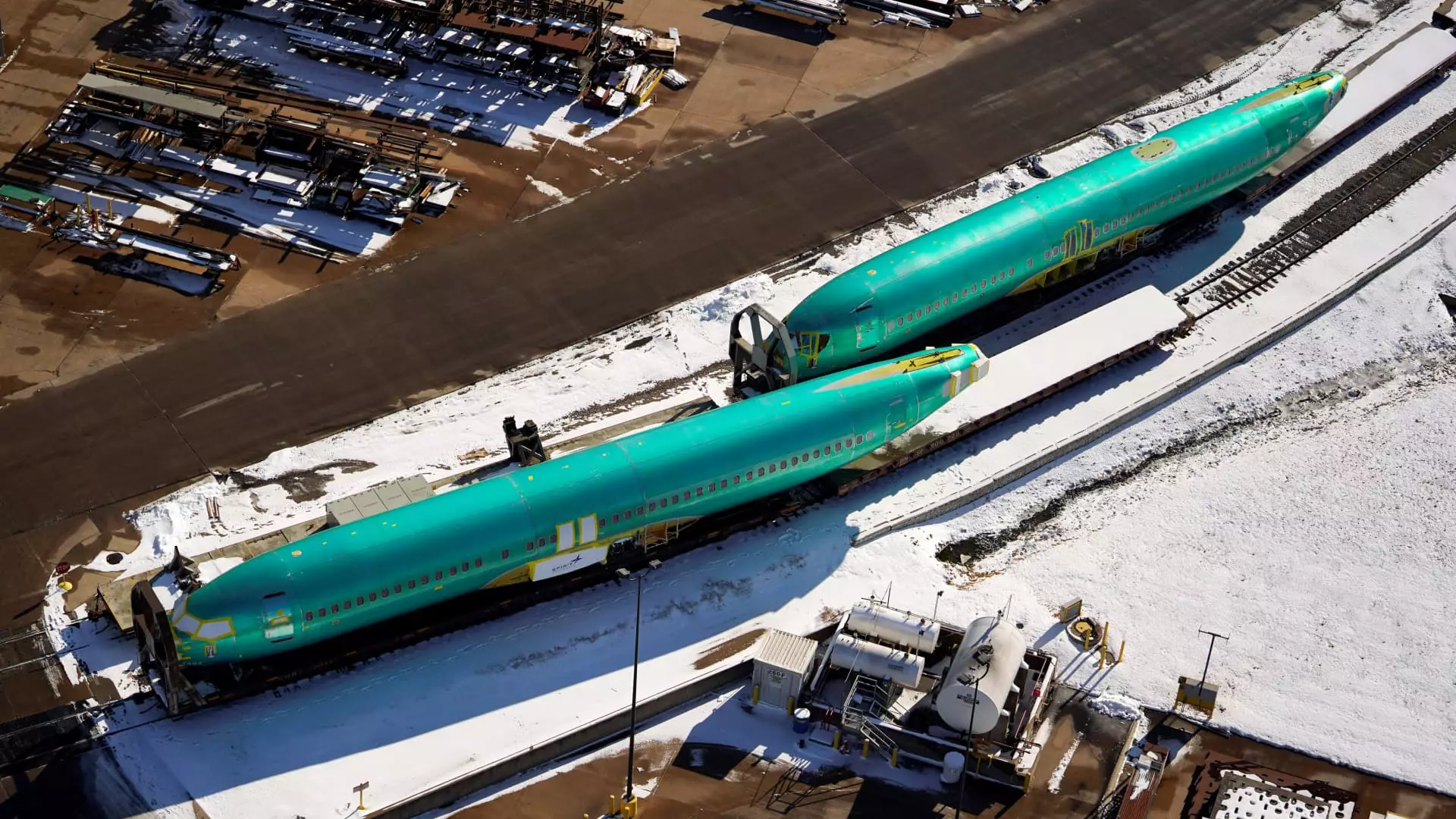The aerospace sector is currently witnessing tumultuous times, primarily driven by a significant strike action that has drawn attention not only to the primary manufacturer, Boeing, but also to its vital suppliers. Spirit AeroSystems, a key player in Boeing’s supply chain, has reluctantly decided to furlough approximately 700 employees due to an ongoing strike that has now extended into its sixth week. This workforce reduction encapsulates the far-reaching consequences of labor disputes, which ultimately affect production timelines and financial health across the industry.
The Boeing workforce, comprising over 32,000 machinists, initiated the strike on September 13 after decisively rejecting a provisional labor agreement. Their collective action points towards unresolved grievances, including salary adjustments and working conditions, highlighting the essential role labor relations play in maintaining operational continuity. For Boeing’s newly appointed CEO, Kelly Ortberg, this scenario poses a considerable challenge, as he must navigate a company already besieged by financial burdens exacerbated by a prolonged work stoppage.
Spirit AeroSystems has stated that the temporary furloughs could compromise about 5% of its total U.S. workforce, primarily impacting operations at their principal facilities located in Wichita, Kansas. Not only does this furlough reflect an immediate response to the strike’s fallout, but it raises concerns about the long-term viability of both Spirit and its workers. Joe Buccino, a spokesman for Spirit, revealed troubling news concerning the company’s operational strategy should the strike persist beyond November. The potential for further layoffs emphasizes the vulnerability of suppliers in the face of their primary contractor’s labor disputes.
In light of the crisis, Boeing is tightening its belt significantly. Last week, Ortberg announced cost-cutting measures aimed at slashing the workforce by roughly 10%, equating to approximately 17,000 positions. This significant downsizing is part of a broader strategy to mitigate losses at a time when the company must also confront the reality of halted production lines. The planned cessation of the 767 commercial aircraft and the delayed introduction of the 777X offer a stark reminder of the operational hurdles Boeing faces while striving to maintain liquidity.
With around 700 Spirit workers on furlough primarily linked to the 777 and 767 programs, production concerns loom large. The inventory built up by Spirit cannot offset the damages incurred during stalled operations due to strikes. The uncertainty surrounding the strike’s duration has left both companies in a precarious position, with ramifications likely to extend well into the future. The planned acquisition of Spirit by Boeing, projected to close in mid-2025, adds an additional layer of complexity to an already tangled situation.
The ongoing strike and its fallout underscore a critical juncture for Boeing and its supplier ecosystem. As Boeing grapples with workforce reductions and production delays, the path forward will require not only strategic adaptations but also a careful reevaluation of labor relations. The current disruptions serve as a pertinent reminder that stability within such a vital industry is contingent upon ensuring healthy labor relations and an adaptable operational framework. With the aerospace sector recovering from prior downturns, the implications of these labor struggles may echo for years to come, shaping the landscape of manufacturing and worker-management dynamics in this pivotal industry.

